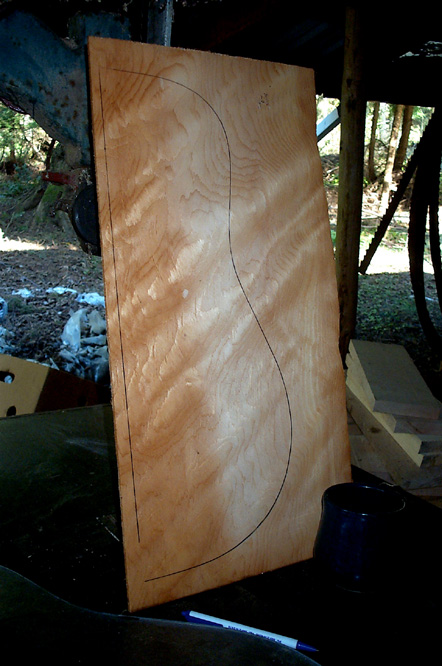I'm pretty much with Al on the wood for the soundboard: for stability, stiffness, aesthetics (good bookmatch), I would not stray far from 90° quartersawn wood for a soundboard.
For backs and sides, you may want to consult a chart of radial and tangential shrinkage values, to help you make a decision with each wood specie as to whether it will likely fail over time (due to natural expansion and contraction.) These charts are all over the web, often under the heading of "wood characteristics" or "wood drying properties."
The percentage number in the chart listed as "Radial" is the percentage of movement (from one point to another, like "green" to "6%MC") for quartersawn wood. I am pretty sure that without exception, wood always moves less (sometimes considerably less) when quartersawn than when flatsawn.
The percentage number listed as "Tangential" refers to flatsawn wood. Note how much higher the percentage of movement is for flatsawn wood, sometimes more than double!
(Charts list these ideal figures, and though you can buy some strictly quartersawn wood, the flatsawn wood is usually flatsawn at some point, and rift at other points. So, you will have to look at the end grain of each piece of wood, determine what amount of the board is truly quartersawn (radial), what amount is flatsawn (tangential), and what amount is riftsawn (interpolate between the radial and tangential figures.)
Now that you see how to read the chart for a particular board of a particular species, I think it helps to have something to compare it to. I have seen a number of Quilted Maple guitars, made by pro luthiers, that evidently live a long life "in service" (with all of the humidity swings of the seasons.) Since Quilted Bigleaf Maple is typically as flatsawn as possible (to show off that poufy pillow figure), I use that as a point of reference. So, if I look up a wood species, and see that the percentage of tangential movement is greater than Bigleaf Maple, I would be afraid to use it flatsawn. If it is about the same as Bigleaf Maple (or less), I would not be afraid to use it.
Since we are talking about a change of width of the board, over a spectrum of humidity conditions, the narrower the instrument, the less you need to worry about wood movement. And, of course the opposite is true as well.
A couple of other points would be that many luthiers who have bent flatsawn wood into sides report a much higher rate of rippling - even when using silicone blankets on solid forms. I think most experienced luthiers agree that quartersawn wood bends with a lot less surprises.
Also, it is easy to get a beautiful bookmatch (at the back seam, and the butt of the sides) with perfectly quartersawn wood. You could even cut 3 slices from a well-quartered board and toss the middle one out, and still get a good bookmatch with the other two. But with flatsawn wood, you will want to cut with a very thin kerf and virtually no blade wandering, and then sand as lightly as possible just to get a reasonable bookmatch.
Do I get a can of lard or a hot air balloon for being long-winded?
 Hope this was helpful to someone.
Hope this was helpful to someone.
Dennis
{edit: Grant, you type faster than me!}


